Introduction
How To Care For Newborn Rabbits Without A Mother: Welcoming a litter of newborn rabbits into the world is both a joyous and challenging responsibility, especially when circumstances require caring for them without the presence of their mother. As delicate and vulnerable creatures, these tiny rabbits require meticulous care and attention to ensure their health and well-being during their crucial early days. Without the nurturing care of a mother rabbit, it falls upon human caregivers to step in and provide the necessary support. In this guide, we will explore the essential steps and considerations involved in caring for newborn rabbits that find themselves without a mother’s care. From providing proper nutrition to maintaining a suitable environment, we’ll delve into the intricacies of ensuring these fragile lives receive the best possible start. Whether you’re an experienced rabbit owner or new to the world of rabbit care, understanding how to care for newborn rabbits without a mother is a rewarding journey that demands dedication and compassion.
Newborn rabbits are unable to regulate their body temperature effectively. Ensure they are kept in a warm and draft-free environment. You can use a heating pad set on low or a heat lamp, but be cautious not to overheat them.The primary challenge when caring for motherless newborn rabbits is feeding. Young rabbits rely on their mother’s milk for vital nutrients, so if the mother is absent, a milk replacement formula becomes necessary. Consult a veterinarian or an experienced rabbit breeder for advice on suitable formulas and feeding schedules.
Newborn rabbits are fed by syringe or dropper, carefully administering the formula to mimic the natural nursing process. Ensure the formula is at the right temperature, as overheating can harm the delicate digestive system.Newborn rabbits require frequent feedings, often every 1 to 2 hours initially. As they grow and their digestive systems develop, the frequency can gradually be reduced.
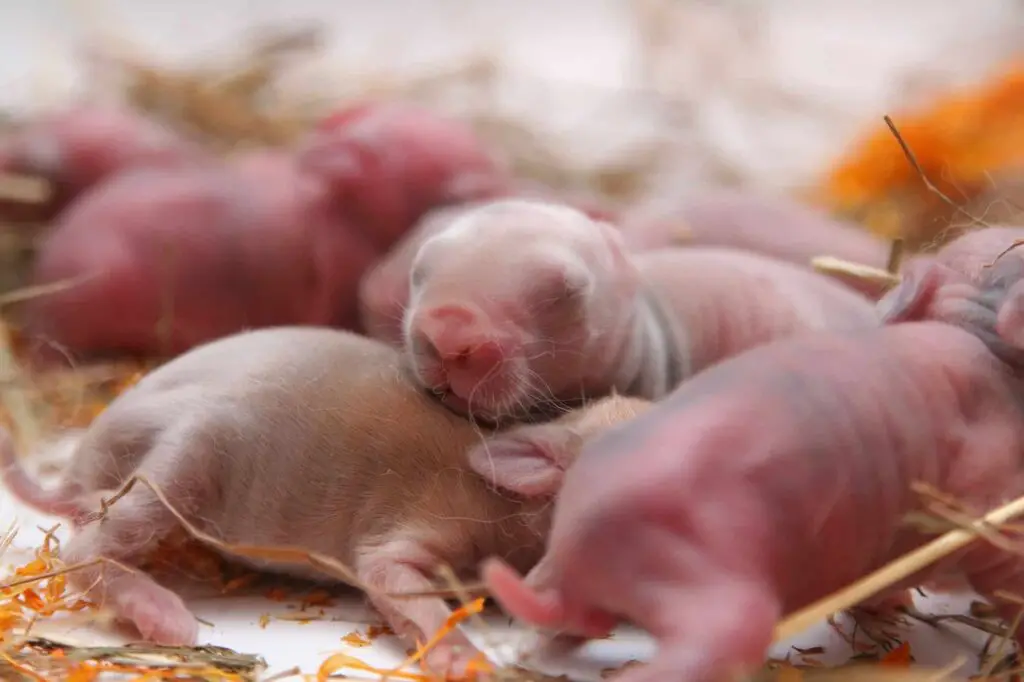
What do you feed newborn rabbits without a mother?
Baby rabbits should be fed Kitten Milk Replacer (KMR) or goat milk, which you can buy at pet stores, or sometimes even a local veterinarian’s office. Because rabbit milk is the most caloric of all mammals, we add in one tablespoon of 100% heavy whipping cream (no sugar) to each can of KMR.
The Importance of Nutrition
Newborn rabbits, often referred to as kits, depend entirely on their mother’s milk for the first few weeks of life. In her absence, replicating the essential nutrients found in mother’s milk becomes essential to ensure their survival and development.
Milk Replacer Formula
Commercially available milk replacer formulas are designed to closely mimic the composition of rabbit mother’s milk. These formulas are specifically formulated to provide the correct balance of nutrients, including protein, fat, carbohydrates, vitamins, and minerals. Never feed cow’s milk or other types of milk, as they lack the necessary nutrients and can lead to digestive issues.
Feeding Techniques
Feeding newborn rabbits requires patience and careful handling. Use a small syringe or dropper to administer the milk replacer formula. Gently hold the rabbit in an upright position and allow them to suckle the formula at their own pace. Make sure the formula is warmed to the correct temperature (around 100°F or 38°C) and avoid overfeeding.
Frequency of Feeding
In the first days of life, newborn rabbits should be fed every 1 to 2 hours. As they grow and their digestive systems develop, you can gradually increase the time between feedings. Consult with a veterinarian for guidance on a feeding schedule based on the age and condition of the kits.
Weaning Process
Around the age of 3 to 4 weeks, you can begin the gradual process of introducing solid foods to the kits’ diet. Start with finely chopped fresh hay and high-fiber rabbit pellets, moistened with water. This transition helps develop their digestive systems and prepares them for a diet of solid foods.
Hydration
In addition to milk replacer, it’s important to provide access to clean, fresh water as the kits grow. Use a shallow dish to make it easy for them to access and prevent drowning accidents.
Professional Guidance
Caring for newborn rabbits without a mother’s guidance can be challenging, and seeking professional advice is crucial. Consult with a veterinarian experienced in rabbit care to ensure you’re providing the right formula, appropriate feeding techniques, and a suitable weaning process.
Can newborn bunnies survive without their mother?
The average litter contains four to five babies. Young rabbits disperse from the nest at 15-20 days old. By three weeks of age, they are on their own in the wild and no longer require a mother’s care. This means that young rabbits found on the ground may be completely healthy.
Natural Motherly Care
In the wild, a mother rabbit provides crucial care to her newborn kits. She nurses them with her nutrient-rich milk, keeps them warm, and protects them from danger. Her presence and care are pivotal to their chances of survival.
Human Intervention
When newborn bunnies are separated from their mother, whether due to maternal abandonment, illness, or unforeseen circumstances, human caregivers can step in to fill the maternal role. However, raising orphaned rabbits requires specialized care, as they are entirely dependent on the support provided.
Human Care and Expert Advice
Human caregivers can play a crucial role in the survival of newborn bunnies. Providing the right care, including proper nutrition, warmth, hygiene, and socialization, is essential. Seeking advice from veterinarians or experienced rabbit breeders is highly recommended to ensure you’re meeting the kits’ specific needs.
Success Stories
Many stories exist of orphaned rabbits thriving with the right care. Dedicated caregivers who provide the necessary attention, patience, and love have been able to raise healthy rabbits that grow into adulthood.
How long can a newborn rabbit survive without milk?
At most, baby rabbits can go without food for 3-4 days. In nature, most baby bunnies are fed only once a day, between midnight and 5 a.m. And, unlike many animals, rabbits do not nurse their young right after their born – their mother feeds them the following night. How do you feed a baby rabbit with a syringe?
The First Few Days
In the first days of life, newborn rabbits are entirely dependent on their mother’s milk. Their digestive systems are not equipped to handle solid food, and they rely on the colostrum and milk provided by the mother to receive essential nutrients, hydration, and immunity. During this time, the kits are vulnerable and cannot survive without maternal care.
Impact of Deprivation
The absence of milk in a newborn rabbit’s diet can lead to several detrimental effects:
Malnutrition: Without proper nutrition, kits are unable to gain weight and develop properly. Malnutrition can lead to stunted growth and a weakened immune system.
Dehydration: Milk not only provides nutrition but also hydration. Depriving kits of milk can quickly lead to dehydration, especially in their early days when they are unable to drink water independently.
Weak Immunity: Mother’s milk contains antibodies that offer passive immunity to the kits. Without this immunity boost, kits are more susceptible to infections and diseases.
Survival Timeline
The exact timeline for how long a newborn rabbit can survive without milk varies depending on several factors:
Age: Kits that are only a few days old have a much shorter window of survival without milk compared to slightly older kits that might be starting the weaning process.
Reserves: Kits that have absorbed some of their mother’s milk shortly before separation might have a bit more time before their reserves are depleted.
Environmental Conditions: Temperature, humidity, and overall environmental conditions can impact a kit’s ability to survive without milk. Cold temperatures can accelerate the depletion of energy reserves.
Human Intervention
If you find yourself in a situation where a newborn rabbit is separated from its mother and deprived of milk, it’s crucial to take immediate action. Consult a veterinarian or an experienced rabbit breeder for guidance on providing suitable milk replacer formula and caring for the kit’s nutritional needs.
How long do baby bunnies need milk?
Weaning. A domestic rabbit feeds her babies for about 8 weeks, gradually decreasing the frequency of feedings until they lose interest. Your baby bunnies will start to nibble on pellets and solid food at about the age of two to three weeks, but this does NOT mean they are ready to be weaned.
The First Weeks of Life
Baby bunnies, also known as kits, are born in nests that their mother constructs from her own fur and grass. In their initial days, they are blind and unable to move far from the nest. During this time, their mother’s milk is their sole source of sustenance, providing vital nutrients, antibodies, and hydration.
Colostrum and Maternal Care
In the first 24 to 48 hours after birth, mother rabbits provide their kits with colostrum—a nutrient-rich and antibody-packed secretion that supports their immune system. This early milk plays a crucial role in jumpstarting the kits’ growth and helping them resist diseases.
Transition to Solid Foods
Around the age of 2 to 3 weeks, baby bunnies begin to venture out of the nest and explore their surroundings. This marks the beginning of their transition to solid foods. The mother introduces them to the same hay and pellets that adult rabbits consume. The kits start nibbling on these foods as they develop the ability to process solid matter.
Gradual Weaning
The process of weaning—gradually transitioning from milk to solid foods—is a delicate phase in a baby bunny’s life. Over the course of several weeks, the kits increasingly rely on solid foods for nutrition while still nursing from their mother. This gradual shift allows their digestive systems to adapt to processing different types of foods.
Complete Weaning
Around the age of 6 to 8 weeks, baby bunnies are generally fully weaned and can survive independently without their mother’s milk. They now consume a diet consisting mainly of hay, fresh vegetables, and high-fiber rabbit pellets.
Individual Variations
It’s important to note that the exact timing of weaning can vary depending on factors such as the rabbit’s breed, health, and the mother’s milk production. Some kits may start eating solid foods a bit earlier, while others might take longer to fully transition.
Observing Behavioral Cues
When determining the readiness of baby bunnies to be weaned, it’s important to observe their behavior. If they are actively showing interest in nibbling on hay and solid foods, and their mother is starting to spend less time nursing them, it’s a good indicator that they are ready for the weaning process.
Do baby rabbits drink water?
Young Rabbits (up to 8wks old) drink milk from their mothers. They may also start drinking water from their mom’s water bottle or bowl at about 3 to 4 weeks of age.
Early Days: Limited Water Intake
In their initial days, baby rabbits primarily rely on their mother’s milk for both nutrition and hydration. Mother’s milk provides essential fluids along with vital nutrients that are crucial for their growth and development. During this period, baby rabbits do not typically drink water separately.
Transition to Solid Foods
Around the age of 2 to 3 weeks, baby rabbits begin to explore their environment and nibble on solid foods. As they transition to consuming hay and high-fiber rabbit pellets, their water requirements gradually start to change.
Water and Solid Foods
As baby rabbits start to eat solid foods, they naturally increase their water intake. The water content in fresh vegetables and hay contributes to their hydration. The process of consuming solid foods with higher moisture content helps meet their fluid needs as they grow.
Weaning Process
The weaning process, during which baby rabbits transition from milk to solid foods, plays a significant role in determining their water consumption. As they become more adept at processing solid foods, their reliance on mother’s milk decreases, and their ability to meet their hydration needs from water-rich foods improves.
Providing Water
While baby rabbits derive a portion of their hydration from the moisture content in solid foods, it’s still important to provide them with access to clean, fresh water as they grow. This is particularly crucial when their diet becomes predominantly solid, and they require more water to stay properly hydrated.
Gradual Transition
As baby rabbits gradually transition to an independent diet of solid foods, their need for separate water intake increases. By the time they are fully weaned, typically around 6 to 8 weeks of age, they should have access to water at all times.
Monitoring Hydration
Observing your baby rabbits’ behavior can provide insights into their hydration needs. If they are actively exploring their water source and drinking, it’s a positive sign that they are adjusting well to this new aspect of their diet.
How do you keep baby rabbits alive?
THEY WILL DIE OF STRESS IF HANDLED IMPROPERLY. Keep baby rabbits in a box in a warm, quiet place away from children, household noise, domestic pets and bright lights. If you have a heating pad, turn it on LOW and place it under HALF of the box. DO NOT ATTEMPT TO FEED ANY TYPE OF FORMULA TO A BABY RABBIT.
Warmth and Comfort
Newborn kits cannot regulate their body temperature effectively. Provide a warm and draft-free environment to mimic their mother’s warmth. Use a heating pad set on low or a heat lamp to create a cozy space.
Proper Nutrition
Baby rabbits start by nursing from their mother, receiving essential nutrients and antibodies. If the mother is absent, use a commercial milk replacer formula specifically designed for rabbits. Feed kits every 1 to 2 hours, ensuring the formula is at the right temperature and avoiding overfeeding.
Feeding Techniques
Use a small syringe or dropper to feed the milk replacer formula. Allow the kits to suckle at their own pace and avoid force-feeding. Gently hold them upright during feeding.
Hydration
As kits transition to solid foods, their water intake increases. Provide access to clean, fresh water once they start nibbling on hay and solid foods.
Hygiene and Grooming
Gently clean the kits after each feeding to ensure their cleanliness. Use a damp cloth or cotton ball to stimulate elimination, mimicking the mother’s grooming behavior.
Social Interaction
Spending time with the kits helps them feel secure and prevents loneliness. Offer gentle petting and soothing interactions to create a bond.
Gradual Weaning
Around 2 to 3 weeks of age, introduce solid foods like hay and high-fiber rabbit pellets. Gradually decrease the milk replacer feedings as they become more accustomed to solid foods.
Can you touch baby bunnies?
You and your children can peek at the baby rabbits, but don’t touch them. If anyone picks up a bunny, return it to the nest. A little human scent will not prevent the mother from caring for her young. If it’s clear the mother rabbit was killed, contact a wildlife rehabilitator who can best raise the orphaned bunnies.
The Fragile Stage of Baby Bunnies
Newborn baby bunnies, or kits, are born blind, deaf, and entirely dependent on their mother for nourishment and care. During their early days, their vulnerability is at its peak, and their bodies are still developing. Their bones are delicate, and their skin is sensitive, making them particularly susceptible to injury.
Maternal Protection and Scent
Mother rabbits have a strong instinct to protect their young and might become stressed if they sense unfamiliar scents on their kits. Touching the kits might lead the mother to reject them, which can be detrimental to their survival. Mother rabbits also groom their kits to stimulate urination and defecation, a process that helps maintain their hygiene and health.
The Role of Human Intervention
While it’s best to minimize handling of newborn kits, there are situations where human intervention is necessary. For example, if you find an abandoned kit that is cold or weak, you might need to provide immediate assistance. If you need to handle a kit, it’s crucial to do so with extreme care and sensitivity.
Gradual Socialization
As the baby bunnies grow and develop, you can gradually introduce them to gentle human interaction. Spend time near their enclosure, talking to them in a calm and soothing voice. Over time, they might become more accustomed to your presence.
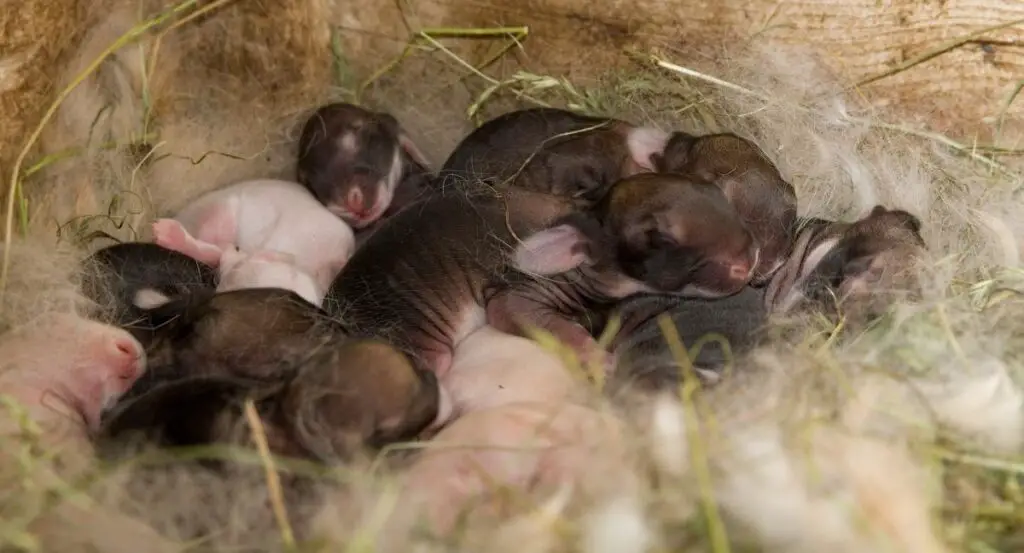
Conclusion
In the journey of caring for newborn rabbits without a mother, compassion, dedication, and a strong sense of responsibility are paramount. The absence of a mother’s care may seem daunting, but with the right knowledge and approach, you can provide these delicate creatures with the nurturing environment they need to thrive.
From maintaining warmth and creating a safe space to meticulous feeding and proper hygiene, every step in the process requires your unwavering attention. Seeking advice from veterinarians or experienced rabbit breeders can provide invaluable insights, ensuring you make the best choices for the rabbits’ health and well-being.
As you tend to these fragile lives, you’ll witness their growth and development firsthand. Their dependence on you for sustenance and comfort underscores the crucial role you play in their lives. Through feeding, cleaning, and providing social interaction, you’re offering them a chance at life despite the challenges they face.
Ultimately, caring for newborn rabbits without a mother is a profound experience that highlights the bonds we share with the animal kingdom. It emphasizes the resilience of life and the lengths we go to ensure the welfare of creatures entrusted to our care. By providing the care, patience, and love they require, you’re not just fulfilling a role – you’re becoming a vital source of support, and the impact of your efforts will be seen in the healthy, thriving rabbits that grow under your watchful eye.

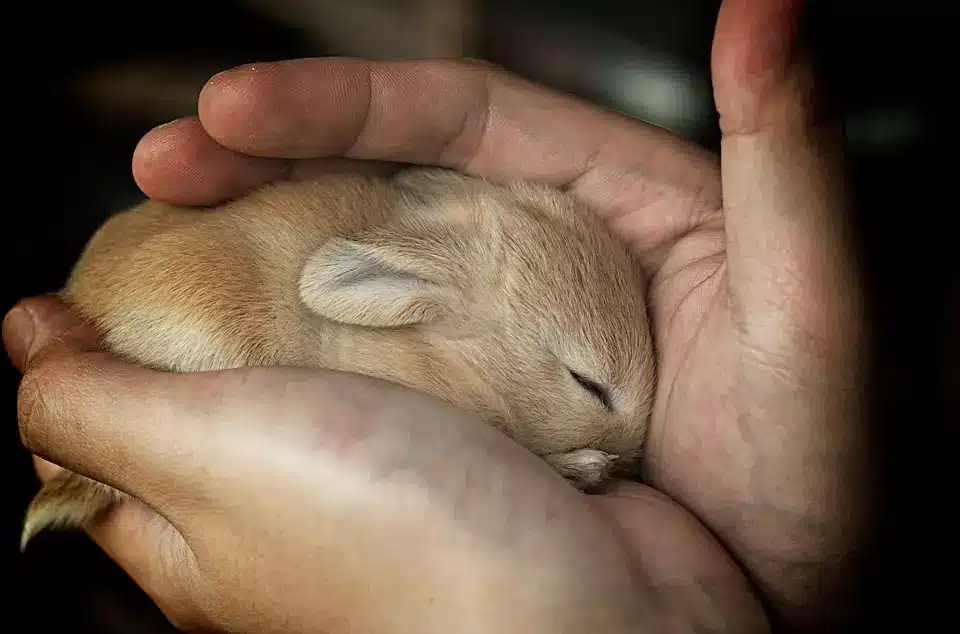

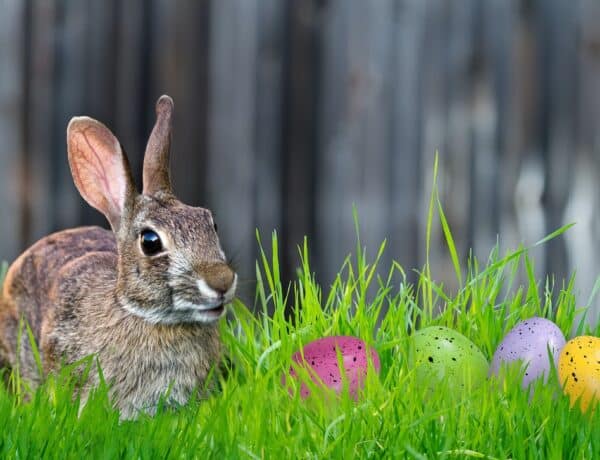
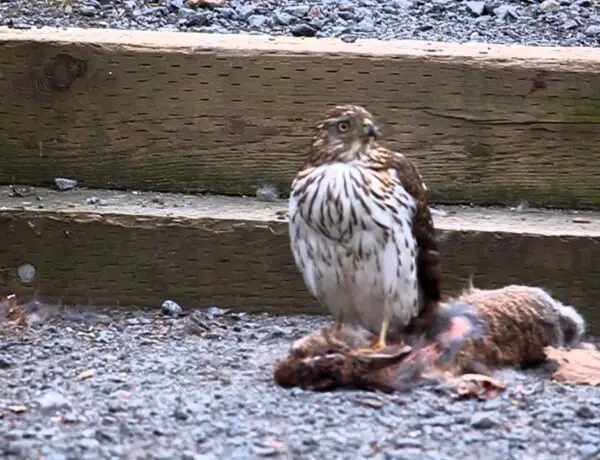
No Comments